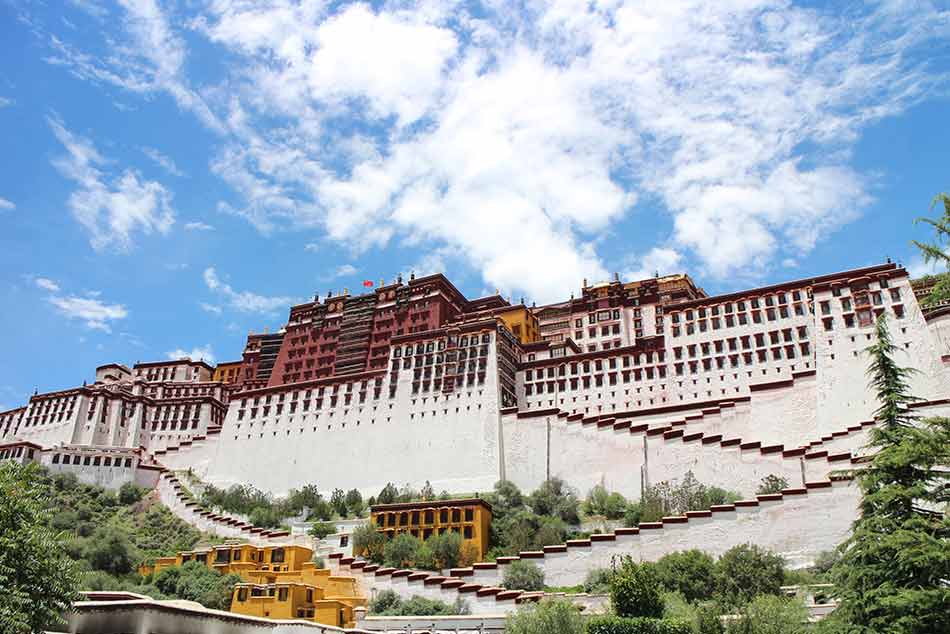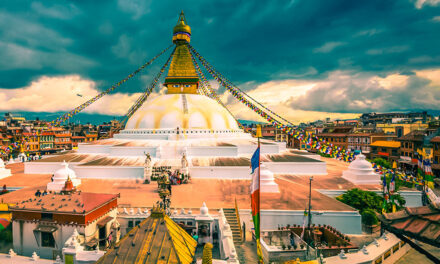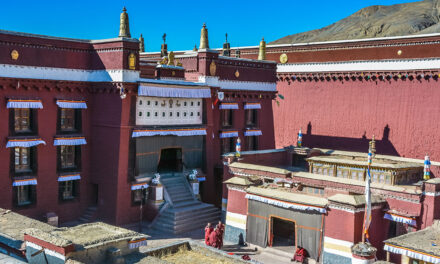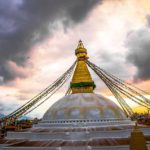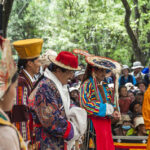Seven Wonders of Tibet: Tibet, often referred to as the “Roof of the World,” is a region known for its rich cultural heritage, breathtaking landscapes, and spiritual significance. Within this mystical land lie seven wonders that have captivated the imagination of people from around the world. In this article, we will explore these wonders and delve into the fascinating stories and experiences they offer.
Mount Kailash
Number one of Seven Wonders of Tibet is Mount Kailash, located in the remote western part of Tibet, holds great spiritual importance for several religions, including Buddhism, Hinduism, Jainism, and Bon. Believed to be the abode of Lord Shiva in Hindu mythology, Mount Kailash attracts pilgrims from different parts of the world. The annual Kailash Manasarovar Yatra pilgrimage is a journey that circumambulates this sacred mountain and includes a dip in the pristine waters of Lake Manasarovar. Legends and myths surrounding Mount Kailash add to its mystical allure, making it a must-visit wonder of Tibet.
Potala Palace
Number two of Seven Wonders of Tibet is Potala Palace. It is situated in the capital city of Lhasa, the Potala Palace is an architectural marvel and a UNESCO World Heritage Site. The winter residence of the succesive Dalai Lamas, this grand palace stands atop the Marpo Ri hill and offers a commanding view of the city. Its construction began in the 7th century and continued through the centuries, resulting in a unique blend of Tibetan, Chinese, and Indian architectural styles. The palace consists of various sections, including chapels, libraries, and the Red Palace, each serving different purposes. The Potala Palace stands as a testament to Tibet’s rich history and cultural heritage.
Mount Everest Base Camp
Number three of Seven Wonders of Tibet is Mount Everest Base Camp. Everest, As the highest peak on Earth, Mount Everest needs no introduction. The journey to the Mount Everest Base Camp is a dream for many adventurers and mountaineering enthusiasts. The trek to the base camp is a challenging yet rewarding experience, offering breathtaking views of the surrounding Himalayan peaks. Along the way, trekkers pass through picturesque Sherpa villages, ancient monasteries, and rugged landscapes. Standing at the base camp, one can feel the immense power and beauty of the mighty Everest, making it a remarkable wonder of Tibet.
Yarlung Tsangpo Grand Canyon
Number four of Seven Wonders of Tibet is Yarlung Tsangpo Grand Canyon. The Canyon Stretching for over 240 kilometers, the Yarlung Tsangpo Grand Canyon is not only the world’s deepest but also the longest canyon. Carved by the mighty Yarlung Tsangpo River, this natural wonder is a sight to behold. The canyon’s towering cliffs, dramatic gorges, and cascading waterfalls create a breathtaking spectacle of nature’s grandeur. Adventurers can indulge in activities like white-water rafting, trekking, and wildlife spotting, immersing themselves in the awe-inspiring landscapes that the Yarlung Tsangpo Grand Canyon has to offer.
Guge Kingdom
Number five of Seven Wonders of Tibet is Guge Kingdom. The ancient Guge Kingdom, nestled in the far-western region of Tibet, is a historical gem waiting to be explored. The kingdom flourished between the 9th and 17th centuries and was renowned for its vibrant culture and impressive architectural wonders. Today, the ruins of Guge offer a glimpse into the kingdom’s glorious past. Intricate frescoes, monastic caves, and the imposing Guge Palace stand as a testament to the kingdom’s artistic and architectural prowess, making it a captivating wonder of Tibet.
Namtso Lake
Number six of Seven Wonders of Tibet is Namtso Lake. Known as the “Heavenly Lake,” Namtso is one of the highest and most sacred lakes in Tibet. Surrounded by snow-capped mountains and vast grasslands, this shimmering turquoise lake offers a serene and picturesque setting. Many pilgrims visit Namtso Lake to seek spiritual enlightenment and immerse themselves in its tranquil atmosphere. The surrounding area is also home to diverse wildlife, including migratory birds, Tibetan antelopes, and wild yaks. Exploring the shores of Namtso Lake is an experience that will leave visitors in awe of Tibet’s natural beauty.
Jokhang Temple
Number seven of Seven Wonders of Tibet is Jokhang Temple. Located in the heart of Lhasa, the Jokhang Temple is one of Tibet’s most sacred sites and a major pilgrimage destination for Buddhists. Built in the 7th century, the temple houses numerous chapels, statues, and religious artifacts. The architecture reflects a mix of Indian, Nepalese, and Tibetan styles, and the central courtyard bustles with devotees and tourists alike. The Jokhang Temple holds immense cultural and religious significance, making it a must-visit wonder that showcases the essence of Tibetan Buddhism.
Conclusion of Seven Wonders of Tibet
The seven wonders of Tibet represent the unique blend of natural beauty, cultural heritage, and spiritual significance that define this mystical land. From the sacred Mount Kailash to the majestic Potala Palace, each wonder offers a captivating experience that immerses visitors in Tibet’s rich history and awe-inspiring landscapes. Exploring these wonders provides a deeper understanding of Tibet’s cultural and spiritual essence. So, embrace the opportunity to embark on a journey of discovery and witness the wonders that make Tibet a truly extraordinary destination.
FAQs of Seven Wonders of Tibet
Q1: How can I reach Mount Kailash?
A1: Mount Kailash can be reached by road from Lhasa or by undertaking the Kailash Manasarovar Yatra, which includes a trek around the mountain.
Q2: Are there any accommodations near the Potala Palace?
A2: Yes, there are several hotels and guesthouses available near the Potala Palace in Lhasa.
Q3: Can I climb Mount Everest from the base camp?
A3: Climbing Mount Everest requires advanced mountaineering skills and experience. The base camp serves as a starting point for climbers but is not suitable for novice trekkers.
Q4: Is it possible to visit the Yarlung Tsangpo Grand Canyon by road?
A4: Yes, there are roads that offer access to viewpoints along the Yarlung Tsangpo Grand Canyon, providing stunning views of the majestic landscapes.
Q5: Are there any restrictions for visiting the Jokhang Temple?
A5: Visitors to the Jokhang Temple are required to follow certain guidelines, such as being respectful, removing shoes, and refraining from photography in certain areas.

